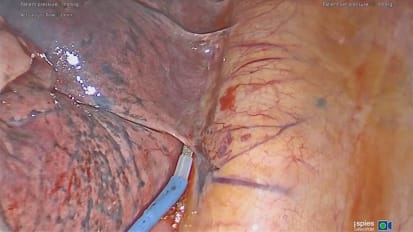Chapters
Transcript
REBECCA LABORDE: My name is Rebecca Laborde, and I'm a postdoctoral research fellow at Mayo Clinic in Rochester, Minnesota. I am discussing an article written by the Departments of Ortohinolaryngology, an experimental medicine in pathology, entitled, Transcriptional Profiling by Sequencing of Orpharyngeal Cancer, which will be appearing in an upcoming edition of the Mayo Clinic proceedings.
This study involved the use of massively parallel DNA sequencing, which is also called next generation sequencing that was used to interrogate the transcription profiles of a subset of head and neck cancers using m-RNA-seq. Head and neck cancers, traditionally, current patients greater than 60 years of age that have a history of smoking and or drinking, exposure to alcohol and tobacco, are generally considered to be the most significant risk factors for developing squamous cell carcinoma of the head and neck.
However, the incidence of orpharyngeal squamous cell carcinoma has been dramatically increasing in younger patients that lack exposure to tobacco and alcohol. Mounting evidence points towards an association of human papillomavirus infection in this patient group, primarily HPV Type 16 and 18. As patient treatment strategies are developed, that focus on a more individualized treatment approach based on the molecular aspects of your biology, it becomes critical that we correctly stratify patients that present with multiple risk factors. It's important that we develop molecular tools to accurately predict which risk factors are most significantly influencing the development of a patient's disease, such as tobacco and alcohol exposure or the prevalence of a high risk HPV infection.
To approach this question, we generated and analyzed full transcript on sequencing for a total of nine orpharyngeal tumor and match normal patient samples to characterize gene expression patterns. Initial findings were validated using a larger group of 38 patient sample pairs and a digital counting technology. The patients included in the study represent three groupings of risk factor exposure-- current smokers with a greater than two pack per week smoking history a current smoking history, former smokers with a smoking cessation history greater than 10 years, and never smokers who lack the smoking history.
The HPV status of these groups varied but was determined by multiple testing procedures. Initially we compared the global gene expression patterns of the samples when grouped by smoking history. We observed, as expected, that the gene expression patterns of current smoker tumor samples were different from those of never smoker tumors.
An interesting observation was that the expression profile of tumor samples from former smokers more closely represented that of never smokers than current smokers. Also that the normal tissue all three groups showed similar patterns of gene expression. We then identified specific gene targets that displayed differential pairings of expression in samples divided by smoking status. We grouped the differentially expressed genes into pathways and focused on genes within the P53 signaling pathway.
Following the validation experiments, using a larger group of patient samples, we identified a significant expression pattern between smoking groups for two specific DNA damage responsive genes in the P53 pathway, ATR and CHEK2. We found that expression of ATR is significantly upregulating current smoking patients as compared to either never smokers or former smokers. The expression of ATR is indistinguishable between never and former smokers.
Further analysis that included the HPV status of these patients, found that both genes ATR and CHEK2 are significantly upregulated in current smoking patients that lack an HPV infection. These findings hold immediate significance for patients because they provide further evidence of the benefits of smoking cessation, and that they occur even at the molecular level. This should provide additional incentive for adhering to a smoking cessation program.
These findings are significant for clinical practice as the pattern suggests that significant patterns of smoking cessation may allow for RNA transcript regulation to return to patterns more closely resembling that of nonsmokers. This would suggest that stratification of patients based on smoking history should consider former smokers as a separate group, rather than including them with either current or never smoking patients. Our ongoing research is focusing on identifying the mechanisms that drive transcript dysregulation that was observed in the study. This will include a careful inspection of the genome to identify changes to the DNA such as mutations and analysis of the epigenome to identify alterations such as DNA methylation. It is likely that both of these mechanisms contribute to the genomic changes that drive the development of orpharyngeal cancers.
Finally, this work demonstrates the potential of transcript on sequencing to become an important clinical tool as we move toward a more individualize approach to patient care. Improvements in sequence output and a decreasing cost allow us to consider this as an option for developing tools to more accurately stratify patients and define molecular characteristics of an individual's tumor biology. These advancements have the potential to supplement current treatment approaches, and ultimately to improve patient care.
We hope you benefited from this presentation based on the content of Mayo Clinic proceedings. Our journal's mission is to promote the best interests of patients by advancing the knowledge and professionalism of the physician community. If you're interested in more information about Mayo Clinic proceedings, visit our website site at www.mayoclinicproceedings.org. There you will find additional videos on our YouTube channel, and you can follow us on Twitter. For more information on health care at Mayo Clinic, please visit www.mayoclinic.org This video content is copyrighted by Mayo foundation for Medical Education and Research.
Dr. Rebecca Laborde, postdoctoral research fellow at Mayo Clinic in Rochester, Minnesota, shares the results of a study appearing in the March 2012 issue of Mayo Clinic Proceedings, that supports the application of mRNA-seq technology as a way to more accurately stratify patients based on individual tumor biology to improve the understanding of tumor prognosis and treatment responses that would improve individualized patient care strategies.
Related Videos





